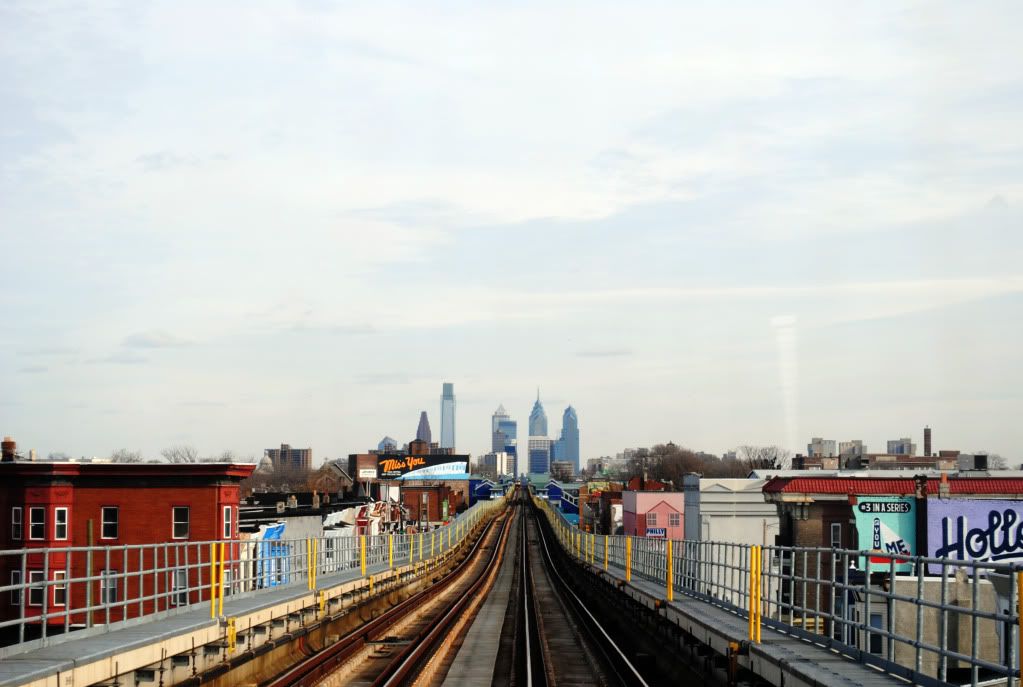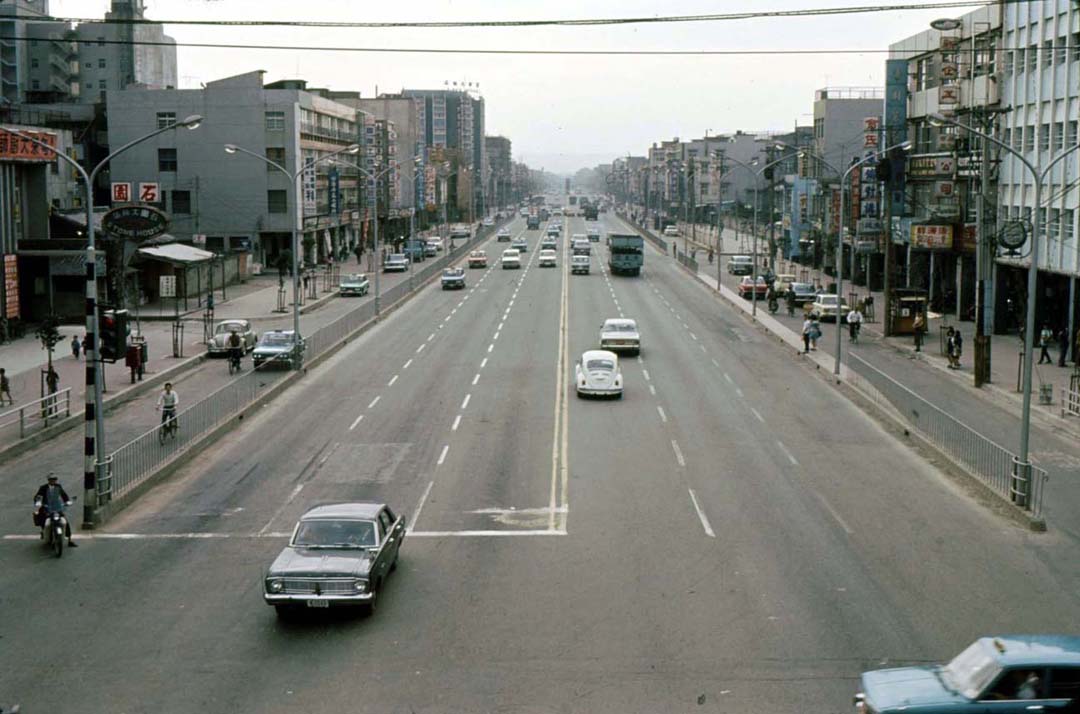Saturday, July 24, 2010
Then and Now: Ximen Circle (西門圓環), Taipei
Since the end of World War II, Taipei's Ximending district (西門町) has been one of the city's largest retail and entertainment hubs, as well as a major center of local youth culture. The neighborhood is one of few places in Taiwan to have retained its Japanese colonial period name, literally "west gate town," owing to its location immediately outside of Taipei's western walls. Though the city walls were dismantled in 1905, Ximending's main entrance continues to face the major intersection that has replaced the western gate, long known as Ximen Circle.
The intersection underwent an enormous reconfiguration during the 1990s, which included the conversion of the traffic circle into a single, essentially four-way crossing, replacing the central plaza with smaller ones along the edges, one of which is shown above. The Ximen Taipei Metro station opened in 1999, and has consistently been one of the most heavily used stops in the system.
Original photo: Carpenter, N. "Looking back at the traffic circle in the opposite direction." 1970. Shulinkou Air Station. 23 Jul. 2010. http://members.tripod.com/Shulinkou/shimading5.jpg.
Tuesday, July 20, 2010
Then and Now: Intersection of Zhongshan and Minquan Roads looking south, Taipei
The Zhongshan and Minquan Road intersection is still busy today, although it's no longer one of downtown Taipei's most important crossroads. Most of Taipei's major avenues were reconfigured and landscaped in the 1950s and 60s; the trees running down Zhongshan Road's two median strips in the original photo appear to have been planted only several years earlier.
The hotel building in the background with the circular rooftop restaurant, known as the Center Hotel in 1970, was later reopened as the Fortuna Hotel (富都大飯店), which closed in 2007 and was demolished shortly afterwards. The four two-story commercial buildings just off of the street corner on the right side still remain, although somewhat hidden underneath a billboard addition.
Original photo: Lentz, R. "Central Hotel and Back Street Market" 1970. Shulinkou Air Station. 19 Jul. 2010. http://shulinkou.tripod.com/rlcentralhtl70.jpg.
Tuesday, July 13, 2010
Then and Now: FuShun St, Taipei
In the 1960s and 70s, the side streets off of Zhongshan North Road, Section 2 housed a number of bars and nightclubs that were mainly popular among American servicemen and other expats. Pictured here is FuShun Street (撫順街), once home to a number of such establishments like the Queen's Club, the Hawaii Bar, and the Arcade Bar.
40 years later, the American military presence in Taiwan is long gone, and the neighborhood is no longer much of a nightlife hotspot. Today's FuShun Street, substantially more built up, is a rather typical-looking side street, and almost completely unrecognizable from its former appearance. However, one building seems to remain from the original view: the bunker-like concrete building in the right foreground.
Original photo: Carpenter, N. "Looking down Fu-Shun Street." 1970. Shulinkou Air Station. 13 Jul. 2010. http://shulinkou.tripod.com/queens2.jpg
Sunday, July 11, 2010
1970s Taipei through American eyes
 It's not the most obvious place one would expect to find a bunch of old photographs of Taipei, but a website (on Tripod, no less) maintained by former U.S. military personnel stationed at Shulinkou Air Station happens to have a small but valuable collection of such photos. The 6987th Security Group was one of many American military units stationed in Taiwan between 1955 and 1977, during the period of formal military cooperation between the United States military and the Republic of China government. The website is a messy one to navigate, but it offers a few fascinating glimpses of expatriate life in the island's capital city.
It's not the most obvious place one would expect to find a bunch of old photographs of Taipei, but a website (on Tripod, no less) maintained by former U.S. military personnel stationed at Shulinkou Air Station happens to have a small but valuable collection of such photos. The 6987th Security Group was one of many American military units stationed in Taiwan between 1955 and 1977, during the period of formal military cooperation between the United States military and the Republic of China government. The website is a messy one to navigate, but it offers a few fascinating glimpses of expatriate life in the island's capital city.Their photographs reveal a city that was in many ways dramatically different from contemporary Taipei, and one which doesn't usually invite much nostalgia. In the 1970s, it was by all accounts a rather drab, gritty place, with little of the cosmopolitan glamour of other East Asian metropolises like Hong Kong or Tokyo. Despite rapid population growth, the central city remained relatively low-slung, with extremely few high-rise buildings. The city's downtown remained largely concentrated along Zhongshan Road, and had yet to be be overtaken by fast-growing districts to the east.
Unfortunately, many of the vantage points that these photographs were taken from no longer exist or are no longer publicly accessible, a principle cause being the destruction of the elevated pedestrian walkways that once crossed over most of the city's major intersections. Again, it's not an easy website to get around, but for anyone acquainted with contemporary Taipei, it's worth a look.
Photo credits:
1. Carpenter, M. "Making the rounds in Taipei." 1970. Shulinkou Air Station. 11 Jul. 2010. http://members.tripod.com/Shulinkou/dawgx3b.jpg.
2. Swallom, S. "The intersection of Min Chuan East Road and Hsin Shen North Road." 1970. Shulinkou Air Station. 11 Jul. 2010. http://shulinkou.tripod.com/pbminchuanrd2.jpg.
3. Duffin, L. "1972 shot of Chung-Hua Road." 1972. Shulinkou Air Station. 11 Jul. 2010. http://shulinkou.tripod.com/ldshim7178.jpg.
Monday, July 5, 2010
Brian goes to Los Angeles

I'm afraid that I have some unfortunate news for my Philadelphia area readers. Looking back now, my first post of 2010 was somewhat portentous, since my imminent plans to pursue graduate studies in linguistics are leading me to Los Angeles, California. Among other things, it means that the Philadelphia Then and Now posts are coming to an end for the foreseeable future.
When I first created this blog back in 2008, my original intention was to create more of a personal blog with a broader scope of subject matter, which explains the very silly blog name that's now quite out of character with what I've actually written. I suspect that it has to some degree prevented all this from being taken particularly seriously. Anyhow, although I'd been toying with the idea of then and now montages from the beginning, I never imagined that BGTT (thanks for the acronym, Brownstoner!) would become almost exclusively devoted to them. For better or for worse, it's a rather strange yet rewarding addiction.
A great sense of loss accompanies many of the then and now posts that I've done, and I can't see how it could possibly be otherwise. I hope it underscores the urgent need to rediscover, preserve, and protect the many beautiful places that continue to enrich the lives of Philadelphians today. Admittedly, I've only delved into an absolutely minuscule fraction of the region's geographic area and history. I'm reluctantly putting aside a long backlog of Philadelphia places that I never got around to posting about, mostly west of 40th Street, north of Spring Garden, and south of South Street.
I would never have set about blogging were it not for the inspiration I've received from Philadelphia's wonderful blogosphere, and the many great bloggers who have cared so much for this great city's past, present, and future: the beloved and dearly missed Philly Skyline, The Necessity for Ruins, The Illadelph, and the wonderful newcomer Brownstoner, to name just a few. Furthermore, the vast majority of this site would not have been possible without the many repositories of historical images that have graciously made their collections available online, such as the Lower Merion Historical Society, Built in America/HABS, and above all, the amazing PhillyHistory.org. Lastly, I must extend a heartfelt thanks to Professor Jeffrey A. Cohen, who has more than anyone else fostered my fascination with the Philadelphia region's architectural and urban history.
So what happens now? I imagine that I will find the time to continue to write and take photographs in Los Angeles, but probably not for some time after I've settled in. It took me at least two years of living in the Philadelphia area before I could consider myself relatively knowledgeable enough about the region's history to blog about it. I don't think I could properly put into words what an enormous pleasure it has been to live in Philadelphia, and how sad I am to be leaving, so you'll have to take my word for it. So for my readers from the area, thank you so much for supporting the blog, and I do hope you decide to stick around. I'm already looking forward to my next visit.

Subscribe to:
Comments (Atom)




